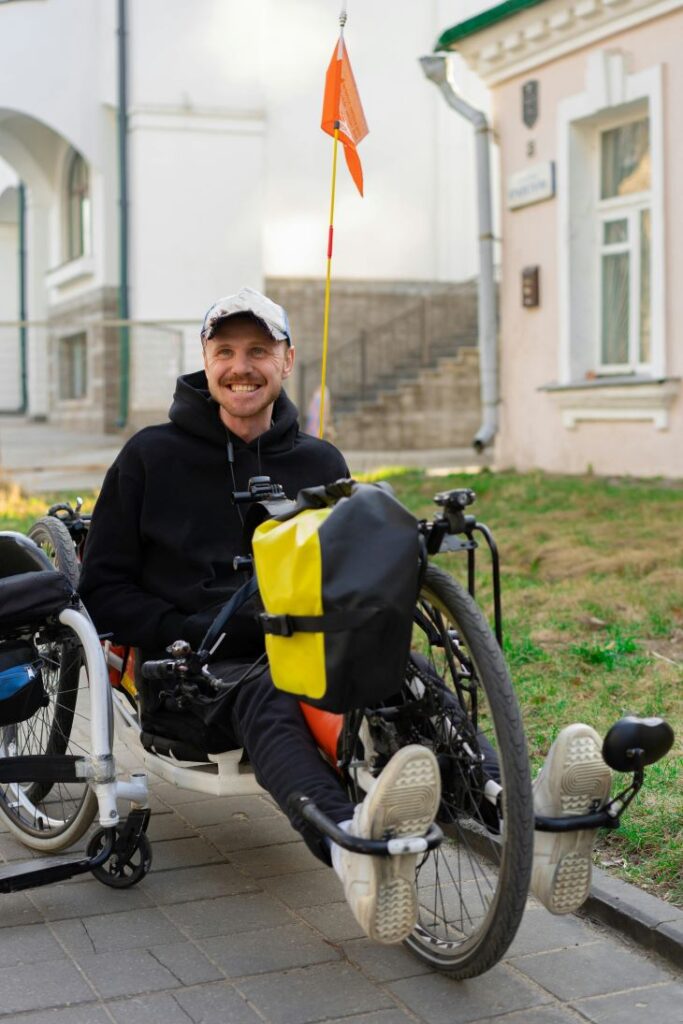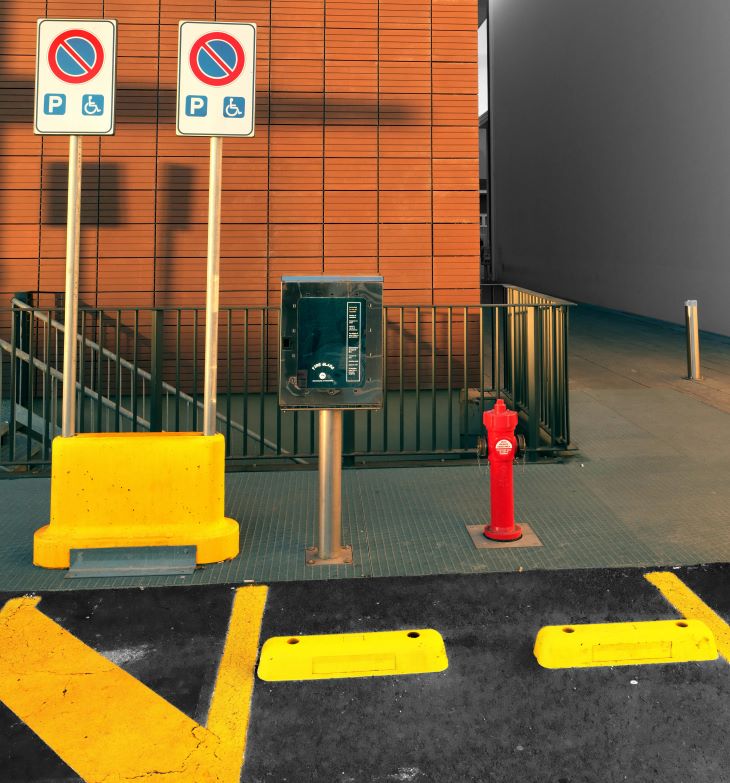California is known for its landscapes, cities, and diverse culture, attracting travelers from around the world. However, for individuals with disabilities or mobility issues, without knowing the accessible places in California, exploring the state might become difficult. Navigating unfamiliar terrain, accessing public spaces, and participating in activities may require additional accommodations to ensure a seamless and enjoyable experience. In recognition of this, California has implemented measures to enhance accessibility and inclusivity for all visitors, including the provision of handicap permits.
In this comprehensive guide, we’ll take a look at the top accessible places in California for handicap permit holders. From iconic attractions to natural wonders, and cultural landmarks to outdoor recreation areas, we’ll highlight destinations that prioritize accessibility and cater to the diverse needs of travelers with disabilities. Our goal is to ensure that everyone, regardless of mobility limitations, can experience the magic of the Golden State without limitations or barriers.
Throughout this guide, we’ll explore the various accessibility features and services offered at each destination, including designated parking areas, wheelchair-accessible entrances, accessible pathways, and facilities equipped with amenities such as ramps, elevators, and accessible restrooms. We’ll also provide insights into additional resources and assistance available to handicapped permit holders, such as guided tours, assistive devices, and transportation options tailored to their needs.
Must-Visit Accessible Destinations in California
Iconic Attractions
California boasts some of the most visited attractions in the world, and many of them are accessible to individuals with disabilities. Disneyland Resort, nestled in Anaheim, is renowned for its magical ambiance and thrilling rides. With designated parking areas, accessible entrances, and wheelchair-friendly attractions, Disneyland ensures that all guests can enjoy the magic of the park.
Similarly, Golden Gate Park in San Francisco offers accessible experiences. From tranquil gardens to world-class museums, the park caters to visitors of all abilities. Wheelchair-accessible pathways and accessible restrooms make exploring the park a breeze for handicapped permit holders.
Universal Studios Hollywood is another must-visit destination for movie enthusiasts and thrill-seekers alike. The theme park provides comprehensive accessibility services, including wheelchair rentals, accessible restrooms, and priority boarding for attractions. With thrilling rides and behind-the-scenes tours, Universal Studios Hollywood promises an unforgettable experience for handicapped permit holders.
For more information, read our “Traveling in California: A Guide to Accessible Handicap Parking at Attractions” blog post for more information about accessible parking at some of these attractions.
Natural Wonders
California’s natural beauty is unparalleled, and several national parks offer accessible experiences for visitors with disabilities. Yosemite National Park, with its waterfalls and granite cliffs, provides accessible trails and facilities for handicapped permit holders. From scenic overlooks to wheelchair-accessible picnic areas, Yosemite ensures that everyone can enjoy its breathtaking landscapes.
Sequoia and Kings Canyon National Parks are renowned for their towering sequoia trees and vistas. The parks offer accessible trails, campgrounds, and visitor centers equipped with accessibility features. Whether exploring the Giant Forest or admiring the rugged beauty of Kings Canyon, handicap permit holders can immerse themselves in nature’s grandeur.
Joshua Tree National Park, with its otherworldly landscapes and unique rock formations, also provides accessible opportunities for visitors with disabilities. Accessible campsites, trails, and picnic areas ensure that everyone can experience the park’s rugged beauty and starry skies.
Best Locations in California for Handicap Permit Holders
Coastal Gems
California’s coastline is dotted with accessible destinations that cater to visitors with disabilities. Santa Monica Pier, with its iconic Ferris wheel and lively atmosphere, offers accessible parking, ramps, and wheelchair rentals. Visitors can enjoy panoramic views of the Pacific Ocean and indulge in delicious seafood at accessible restaurants along the pier.
Monterey Bay Aquarium, located on Cannery Row, is renowned for its diverse marine life and immersive exhibits. The aquarium provides wheelchair-accessible entrances, elevators, and restrooms, ensuring a seamless experience for handicapped permit holders. From playful sea otters to mesmerizing jellyfish, visitors can explore the wonders of the ocean up close.
Santa Cruz Beach Boardwalk, with its classic amusement park rides and sandy beaches, offers accessible attractions and facilities for visitors with disabilities. Wheelchair-accessible ramps, parking spaces, and restrooms ensure that everyone can enjoy the thrills of the boardwalk and the beauty of the coastline.
Urban Destinations
California’s vibrant cities are hubs of culture, entertainment, and accessibility. San Francisco Museum of Modern Art (SFMOMA), with its extensive collection of contemporary art, provides accessible galleries, elevators, and tactile exhibits for visitors with disabilities. The museum’s commitment to inclusivity ensures that everyone can appreciate the power of art.
Griffith Observatory in Los Angeles, perched atop Mount Hollywood, offers panoramic views of the city skyline and the stars above. The observatory provides accessible parking, ramps, and restrooms, as well as tactile exhibits and audio descriptions for visitors with disabilities. Whether gazing through telescopes or exploring interactive exhibits, handicap permit holders can embark on a celestial journey at Griffith Observatory.
San Diego Zoo, home to thousands of animals from around the world, offers accessible pathways, viewing areas, and tram tours for visitors with disabilities. The zoo’s commitment to conservation and education is reflected in its inclusive approach to accessibility, ensuring that everyone can connect with wildlife and nature.

California’s Top Accessible Attractions for Handicap Permit Holders
Cultural and Historical Sites
California’s rich history and diverse culture are showcased in its many cultural and historical sites, which offer accessible experiences for visitors with disabilities. Hearst Castle, located along the Central Coast, is a masterpiece of architecture and design. The castle offers accessible tours, shuttle service, and facilities for visitors with disabilities, allowing them to explore the opulent interiors and lush gardens of this historic landmark.
Getty Center, nestled in the hills of Los Angeles, is renowned for its stunning architecture, gardens, and art collections. The center provides accessible parking, ramps, and elevators, as well as assistive listening devices and sign language interpretation for visitors with disabilities. From ancient artifacts to Renaissance masterpieces, handicap permit holders can immerse themselves in the world of art and culture at Getty Center.
Alcatraz Island, with its storied history and rugged beauty, offers accessible tours and facilities for visitors with disabilities. The island provides accessible transportation, audio-described tours, and tactile exhibits, ensuring a memorable experience for handicapped permit holders. Whether exploring the prison cells or admiring the panoramic views of San Francisco Bay, visitors can delve into the island’s rich history and natural wonders.
Outdoor Recreation
California’s diverse landscapes provide endless opportunities for outdoor recreation, with many accessible options for visitors with disabilities. Balboa Park in San Diego, with its lush gardens and Spanish Colonial architecture, offers accessible trails, attractions, and cultural institutions. From the San Diego Zoo to the Botanical Building, handicapped permit holders can explore the park’s many attractions with ease.
Venice Beach Boardwalk, with its eclectic vibe and lively street performers, offers accessible pathways, ramps, and beach wheelchairs for visitors with disabilities. The boardwalk’s vibrant atmosphere and diverse attractions make it a must-visit destination for handicapped permit holders seeking sun, surf, and entertainment.
Lake Tahoe, nestled in the Sierra Nevada Mountains, is a playground for outdoor enthusiasts of all abilities. The lake offers accessible beaches, trails, and recreational facilities, as well as adaptive sports programs for visitors with disabilities where handicapped permit holders can experience the beauty and adventure of Lake Tahoe.
Accessible Destinations in California for Handicap Permit Holders: Insider Tips
Navigating popular tourist spots can be daunting, but with the right resources and information, handicapped permit holders can explore accessible destinations in California with confidence. Here are some insider tips for making the most of your accessible travel experience:
- Plan Ahead: Research accessibility features and services at your chosen destinations, including parking, entrances, and restroom facilities. Many attractions offer detailed accessibility information on their websites, allowing you to plan your visit accordingly.
- Utilize Accessibility Services: Take advantage of accessibility services and resources provided by attractions, such as wheelchair rentals, assistive listening devices, and guided tours for visitors with disabilities. These services can enhance your experience and ensure a seamless visit.
- Accessible Transportation: Investigate accessible transportation options, such as accessible taxis, rideshare services, and public transit, to navigate between attractions and explore the city with ease. Many cities offer accessible transportation services for individuals with disabilities, providing a convenient and reliable way to get around.
- Pack Essentials: Pack essential items for a comfortable and enjoyable day of exploration, including sunscreen, water, snacks, and any necessary medical supplies. Consider bringing a lightweight mobility aid, such as a cane or walker, to help navigate uneven terrain and long distances.
Enjoy the Golden State
California offers a wealth of accessible experiences for handicapped permit holders, from iconic attractions to natural wonders. By exploring the top accessible destinations in the state and utilizing insider tips for accessible travel, individuals with disabilities can embark on unforgettable adventures and create lasting memories in the Golden State. Whether admiring the beauty of Yosemite National Park, strolling along Santa Monica Pier, or marveling at the artistry of Getty Center, handicapped permit holders can experience the magic of California without limitations.
Need more information on disabled parking in the US? From navigating the rules in California to handicap parking for out-of-state visitors in Vermont, we offer a useful bank of detailed topics on the Dr Handicap blog. Check it out today!
Featured image by Alejandro Luengo on Unsplash.



